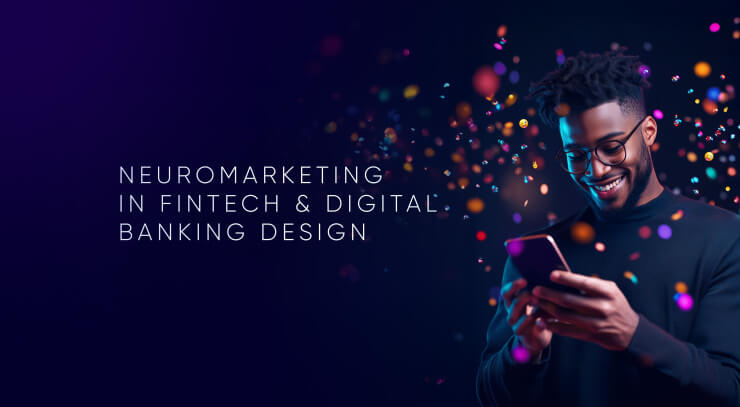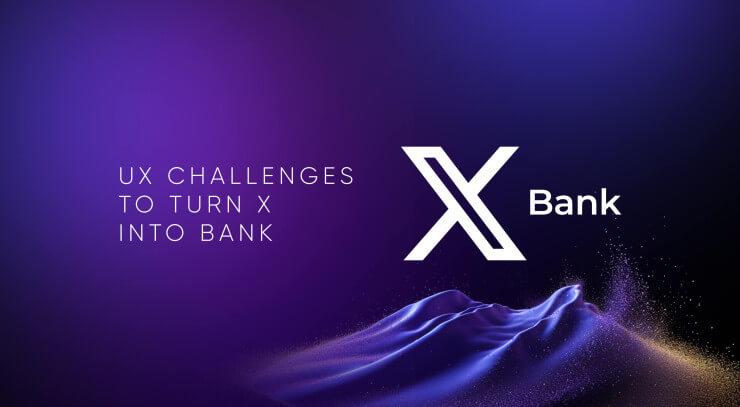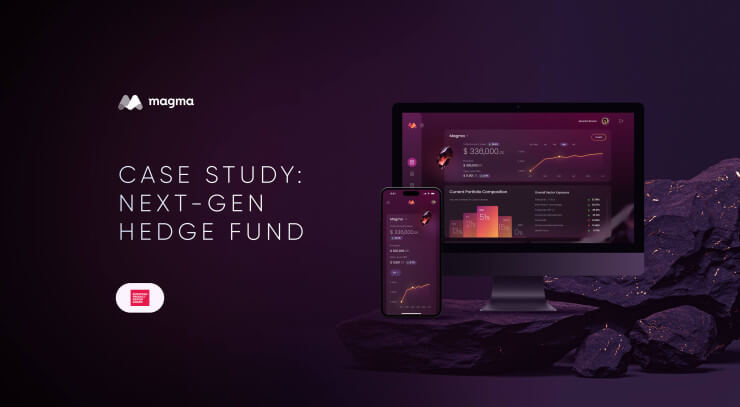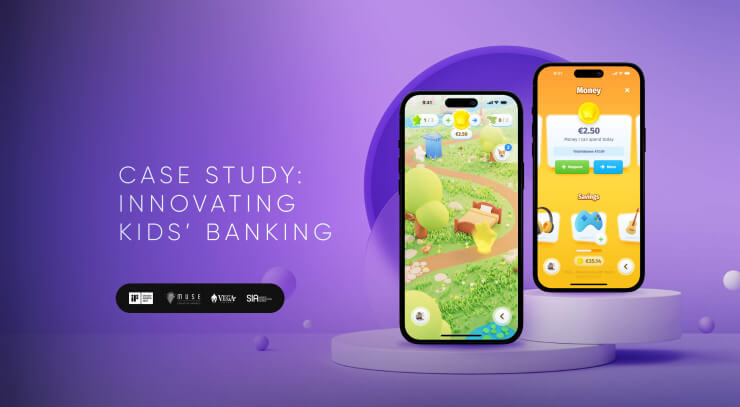Traditional methods of UX design could be significantly empowered by ChatGPT—a powerful generative AI model. This article unveils the secrets of using ChatGPT prompts to drive innovation in banking UX, providing insights into how this tool can be integrated into the standard design process for transformative results.
Why Integrate ChatGPT into the Financial Product Design Process?
Incorporating ChatGPT into the standard product design workflow introduces a powerful tool that combines human creativity with AI-generated insights. For financial digital products, this means developing a user experience that is not only innovative but also deeply attuned to the needs and desires of its users, setting a new standard in the financial industry.
Using generative AI, such as ChatGPT, prompts in banking UX design can be highly valuable for several reasons, and it can significantly empower product teams. Here's how it can contribute to the digital financial product design process:
Advanced Pattern Recognition
AI could analyze large datasets to identify trends and patterns in user behavior, form hypotheses about user needs and preferences, inform the creation of new features or enhancements to existing ones and highlight potential areas for improvement.
Enhancing Creativity and Innovation
ChatGPT serves as a catalyst for creativity, offering unconventional ideas that might not emerge in traditional brainstorming sessions. By challenging assumptions and introducing new concepts, it pushes the design team to think outside the box.
Accelerating the Ideation Phase
AI's ability to quickly generate a vast array of ideas accelerates the initial stages of design. This efficiency allows teams to explore more options and focus their time on refining the most promising concepts.
Informed Decision-Making
By providing qualitative insights that complement quantitative data, ChatGPT helps designers make more informed decisions. It brings a deeper understanding of user preferences and behaviors that numbers alone cannot provide.
Fostering Collaboration
ChatGPT acts as a neutral party in team discussions, offering suggestions that can bridge differing viewpoints. It could facilitate collaboration by providing a common ground for idea exploration.
Unlocking the Potential of ChatGPT in Financial UX Design
Generative AI is already actively used in many areas, significantly speeding up the work process and improving the quality of the outcomes. If we take into account the specifics of financial product design, then services like ChatGPT can be incredibly useful here, too. We are thus ready to share some secrets and tricks of using generative AI in financial UX. Try it, and the results will surprise you.
User Research and Insights
1. Simulating Diverse User Personas and Scenarios
Use ChatGPT to generate detailed personas and user journeys that reflect a wide range of demographics, psychographics and behaviors.
How It Works: By crafting prompts that ask ChatGPT to create specific user profiles and scenarios, designers can uncover unique needs and pain points. For example:
- "Develop a detailed persona for a 28-year-old freelance photographer who manages irregular income and travels frequently. Describe their specific banking needs and how they might interact with a mobile banking app."
- "Imagine a scenario involving a senior citizen who is new to mobile banking but wants to monitor their retirement funds. What challenges might they face, and what features would assist them?"
- "Create a user journey for an international student navigating currency exchanges and international transfers through the banking app. Highlight potential pain points and opportunities for improved UX."
Benefit: This approach enhances empathy and ensures the app addresses the nuanced requirements of different user segments, leading to a more inclusive and effective design.
2. Anticipating User Feedback
Use ChatGPT to predict potential user reactions to new features or design changes prior to implementation.
How It Works: Generate hypothetical reviews and feedback by asking:
- "Generate potential user feedback for a new AI-driven budgeting tool in the app. What praises and concerns might users express?"
- "Imagine hypothetical reviews from users after introducing biometric login features like facial recognition. What are the potential positive and negative reactions?"
- "Provide anticipated user comments on a redesigned app interface that emphasizes minimalism and simplicity. What aspects might they love or find challenging?"
Benefit: Anticipating feedback allows designers to proactively address concerns, enhancing user satisfaction and reducing the need for post-launch fixes.
3. Analyzing Customer Reviews for Insights
Load thousands of customer reviews into ChatGPT to analyze, group and prioritize feedback, extracting actionable recommendations for improvement.
How It Works: By inputting large datasets of user reviews into ChatGPT, AI can identify common themes, frequent complaints and areas of praise. For example:
- "Analyze this dataset of customer reviews to identify the top five areas in which users are experiencing issues with our app and suggest possible improvements."
- "From these user comments, group common praises and complaints, and summarize the main areas where the app excels or falls short in user experience."
- "Examine these reviews to extract key themes about user satisfaction and dissatisfaction and provide actionable recommendations to enhance the app's UX."
Benefit: This process provides a data-driven approach to UX enhancement, ensuring that updates directly address the most significant user concerns, thereby improving overall satisfaction.
4. Extracting Insights from Feature Requests
Review customer requests for new features using ChatGPT to identify the most frequently requested enhancements and understand how they could improve the customer experience.
How It Works: Compile customer feature requests and input them into ChatGPT with a prompt like:
- "Review these customer requests for new features in our banking services. Which features are most frequently requested, and how could they enhance the customer experience?"
- "Identify the top three most requested features by users and discuss how implementing them could improve the overall customer experience in our app."
- "Analyze these feature suggestions for our banking app and prioritize them based on potential impact on user satisfaction and competitive advantage."
Benefit: Prioritizing feature development based on customer demand ensures resources are invested in areas that will have the most significant impact on user satisfaction and engagement.
5. Creating Interview Questions for User Research and Usability Testing
Leverage ChatGPT to create insightful interview questions that uncover users’ financial habits and challenges.
How It Works: By designing prompts for tailored interview questions, you can gather deep insights into specific areas of user behavior. For example:
- “Create interview questions that uncover pain points and challenges users face when setting up an investment account on a mobile banking app.”
- “Design user interview questions to understand users' personal financial management needs, such as budgeting and saving.”
Benefit: This approach leads to more targeted user research, helping you uncover nuanced issues and opportunities for improving the user experience in financial products.
Design and Prototyping
1. Enhancing Accessibility
Employ ChatGPT to brainstorm ways to make the app more accessible to users with disabilities.
How It Works: Craft prompts focused on accessibility improvements, such as:
- "Suggest design modifications to make the app more accessible for users with visual impairments, including compatibility with screen readers and text size adjustments."
- "Propose features that would help users with cognitive disabilities navigate the app more effectively, such as simplified menus or guided assistance."
- "Identify ways to enhance the app's usability for individuals with hearing impairments, especially in features like customer support or alert notifications."
Benefit: Prioritizing accessibility not only broadens the user base but also demonstrates a commitment to inclusivity, enhancing the brand's reputation.
2. Creating Detailed Storyboards
Utilize ChatGPT to assist in creating detailed storyboards that visualize user interactions with the app, highlighting key touchpoints and user flows.
How It Works: By prompting ChatGPT to outline step-by-step narratives of user interactions, designers can develop storyboards that capture the user's journey through the app. For example:
- "Outline a step-by-step storyboard for a new user navigating the app to open a savings account, including their thoughts, emotions and any potential confusion at each stage."
- "Provide a detailed narrative of an existing customer using the app to apply for a mortgage loan, highlighting key touchpoints and decision-making moments."
- "Create a storyboard depicting a user setting up a budget tracking feature within the app, noting any questions they might have and how the app can assist them."
Benefit: Storyboards help visualize and communicate complex user flows, making it easier for the design team to identify potential issues and opportunities for improvement in the user experience.
3. Mapping Emotional Journeys
Utilize ChatGPT to understand and design for the emotional experiences of users interacting with the app.
How It Works: Ask AI to map out emotional stages. For example:
- "Map out the emotional stages a user experiences when applying for a loan through the app, from initial interest to approval or denial. How can the app support them emotionally?"
- "Describe the feelings a user might have when unexpectedly overdrafting their account via the app. What features could alleviate stress in this situation?"
- "Analyze the emotional impact of receiving personalized financial milestones within the app. How can this be leveraged to increase user satisfaction?"
Benefit: Addressing emotional needs fosters a deeper connection with users, promoting loyalty and positive word-of-mouth.
4. Creating UX Content and Microcopy
Use ChatGPT to generate intuitive and user-friendly microcopy for financial services, ensuring customers feel informed and supported.
How It Works: By asking ChatGPT to create microcopy for specific use cases, you can ensure the messages are clear, empathetic and concise. For example:
- “Generate user-friendly error messages for a failed fund transfer in a mobile banking app.”
- “Create onboarding microcopy for first-time users setting up online banking profiles.”
Benefit: This enhances user confidence by providing helpful, easily understood communication, reducing frustration during critical moments like transactions or onboarding.
5. Crafting Usability Testing Scenarios
Use ChatGPT to create realistic usability testing scenarios that explore how users interact with specific financial app features.
How It Works: Generate scenarios that help reveal friction points in critical features of your app. For example:
- “Create a usability testing scenario for a transfer feature in a mobile banking application.”
- “Design a usability scenario for opening a savings account through the mobile app, highlighting potential bottlenecks in the process.”
Benefit: Well-crafted scenarios help you assess the app’s usability in real-world contexts, ensuring smoother user interactions with key financial tools.
Market Research and Competitive Analysis
1. Drawing Inspiration From Other Industries
Leverage ChatGPT to explore successful UX strategies from unrelated industries and adapt them to banking.
How It Works: Prompt AI to analyze features from gaming, social media, or e-commerce platforms that could enhance user engagement in a banking context. For instance:
- "How can gamification elements from fitness apps be integrated into a banking app to encourage users to save more?"
- "Analyze how the community-building features of social media platforms could be adapted to a banking app to enhance user engagement and trust."
- "Suggest ways to incorporate the progress-tracking elements from fitness apps into the banking app to motivate users to achieve their financial goals."
Benefit: This cross-pollination of ideas brings fresh perspectives, fostering innovation that sets the app apart from its competitors.
2. Adapting to Cultural and Regional Nuances
Use ChatGPT to tailor the app's UX to different cultural contexts.
How It Works: Generate insights on cultural preferences by prompting. For example:
- "How should the app's interface change to cater to users in East Asian markets, considering cultural symbolism and color meanings?"
- "Suggest modifications to the app to accommodate users in regions with low literacy rates, such as incorporating more visuals and intuitive navigation."
- "Describe how to tailor the app's features for users in fast-growing economies who are new to digital banking, focusing on trust-building and education."
Benefit: Culturally sensitive designs enhance user comfort and acceptance in diverse markets, expanding the app's global reach.
3. Staying Ahead of Future Trends
Engage ChatGPT to forecast emerging trends that could impact banking UX.
How It Works: Prompt AI to predict technological advancements. For example:
- "Predict how integration with smart home devices could change the way users interact with the banking app over the next decade."
- "Discuss how advancements in AI could enable more proactive financial management features in the app, such as automated investment advice."
- "Analyze the potential impact of blockchain technology on mobile banking apps and how it might alter user expectations for security and transparency."
Benefit: Staying informed about future developments ensures the app remains relevant and competitive over time.
4. Assessing Competitors' Strengths and Weaknesses
Use ChatGPT to analyze reviews of competitors' apps to identify their UX strengths and weaknesses.
How It Works: Input competitor app reviews into ChatGPT and prompt:
- "Based on these reviews of our competitor's app, what are the key UX features users appreciate, and what issues are they facing?"
- "Analyze the strengths in UX design of top banking apps in the market, and suggest how we can incorporate or improve upon these elements in our app."
- "From competitor app reviews, determine common user frustrations and outline how our app can avoid these pitfalls to provide a superior user experience."
Benefit: Understanding competitors' successes and failures allows designers to learn from them, avoid similar pitfalls and capitalize on opportunities to differentiate the app.
Project Workflow
1. Creating a UX Workflow Plan
Generate a comprehensive UX workflow plan with ChatGPT to guide the development and testing of financial app features.
How It Works: ChatGPT can assist in outlining each step of the UX process, ensuring nothing is overlooked. For example:
- “Create a UX workflow plan for a mobile banking app redesign, from user research to usability testing and post-launch feedback.”
Benefit: This helps streamline the entire design process, ensuring all critical stages of UX—from research to testing—are carefully planned and executed.
Limitations of Generative AI in Financial UX Design
Generative AI is a powerful tool that enhances the capabilities of UX designers but will not replace them—especially in the financial sector where complexity, ethics and human connection are paramount. UX designers bring indispensable qualities such as human empathy, ethical judgment, creativity and strategic thinking. Experienced designers bridge the gap between technology and human experience, ensuring that financial services are not only functional but also trustworthy, inclusive, delightful and user-centric.
While ChatGPT is a powerful tool for generating ideas and hypotheses in UX design, it cannot provide live user data or empirical insights. The simulations and suggestions offered by ChatGPT should serve as a starting point for developing actual user research plans. To obtain valid and actionable insights, it is essential to engage directly with your digital service users through methods such as interviews, surveys and usability testing.
By collaborating with AI, UX designers can leverage its strengths—such as data analysis and rapid idea generation—to augment their work. This symbiotic relationship enhances the design process, leading to more innovative and effective financial products. Ultimately, the human touch remains irreplaceable in crafting experiences that resonate deeply with users.
Here are several reasons why generative AI will not replace UX designers specialized in financial products design in the future:
Key Competencies and Qualities
1. Human Empathy and Emotional Intelligence
- Understanding Human Emotions: UX design fundamentally relies on understanding and empathizing with users' emotions, motivations and frustrations. Financial matters are often sensitive and emotionally charged. Human designers can intuitively grasp these nuances, whereas AI lacks genuine emotional intelligence.
- Building Trust: In finance, trust is paramount. UX designers craft experiences that build and maintain user trust through transparent design and ethical considerations—elements that require a human touch.
2. Collaboration and Communication
- Stakeholder Engagement: UX designers collaborate with cross-functional teams, including developers, product managers and executives. They communicate complex ideas effectively and mediate between technical constraints and user needs.
- Advocacy for Users: Designers advocate for the user's perspective within the organization, influencing decision-making processes in ways AI cannot.
3. Adaptability and Learning
- Adapting to Change: The financial industry is dynamic, with rapid changes in technology, user expectations and market conditions. UX designers can quickly adapt their approaches, whereas AI models require retraining with new data.
- Continuous Improvement: Designers engage in lifelong learning, staying abreast of new design methodologies, technologies and psychological insights that inform their work.
4. Creative Problem-Solving and Innovation
- Advanced Design Thinking: Financial UX design will continue to involve complex problem-solving skills requiring a deep understanding of human psychology, creativity and iterative thinking, which AI cannot fully replicate.
- Strategic Thinking: Designers strategize long-term user engagement and align UX with business goals, a level of abstract thinking that AI does not possess.
Ethics and Compliance Focus
1. Complex Ethical and Regulatory Compliance
- Navigating Regulations: The financial industry is heavily regulated, with strict compliance requirements varying by region and over time. UX designers must interpret these regulations and apply them creatively to design compliant yet user-friendly interfaces. AI may not reliably interpret legal nuances or stay up-to-date with changing laws.
- Ethical Considerations: Financial UX design often involves ethical dilemmas, such as preventing user exploitation or ensuring equitable access to services. Human judgment is crucial in making ethical decisions that align with societal values.
2. Ethical Use of AI Tools
- Human Oversight of AI: While AI can assist in generating ideas or prototypes, UX designers are needed to supervise and guide AI outputs, ensuring they are appropriate, ethical and aligned with user needs.
- Preventing Bias: AI models can inadvertently perpetuate biases present in training data. UX designers identify and mitigate these biases to create fair and accessible financial services.
Understanding and Insight
1. Contextual and Cultural Understanding
- Cultural Sensitivity: Financial services are used by diverse populations with varying cultural norms and expectations, creating interfaces that are accessible and inclusive for diverse user groups. UX designers bring cultural awareness to create inclusive solutions that AI might overlook.
- Contextual Awareness: Humans can understand the broader context of user interactions, including environmental factors and societal trends that influence user behavior in the financial sector.
2. User Research and Qualitative Insights
- Interpreting User Research: UX designers conduct interviews, surveys and usability tests, interpreting qualitative data that AI cannot fully comprehend. They read between the lines, detecting subtle cues and body language.
- Hypothesis Generation & Testing: Designers formulate hypotheses about user behavior and iteratively test and refine them—a scientific approach that requires human intuition and adaptability.
Decision-Making and Uncertainty
1. Complex Decision-Making
- Balancing Competing Needs: Designers often need to balance user desires with business objectives, technical feasibility and regulatory requirements. This multifaceted decision-making is beyond AI's capabilities.
- Risk Management: In finance, the cost of errors is high. Human designers assess risks associated with design choices, something AI cannot adequately perform.
2. Embracing Uncertainty and Ambiguity
- Dealing with Ambiguity: UX design frequently involves ambiguous problems with no clear answers. Designers thrive in these situations, using creativity and judgment to navigate uncertainty.
- User Behaviors Beyond Data: Not all user behaviors can be predicted from existing data. Designers explore and understand these outliers, whereas AI relies on patterns in historical data.
Conclusion
Incorporating ChatGPT prompts into banking UX design processes adds significant value by enhancing creativity, collaboration and efficiency. It empowers product teams to make data-driven decisions, improve user experiences and stay ahead of industry trends. While ChatGPT supports and enhances the work of product teams, it complements rather than replaces the human expertise required for designing intuitive and empathetic user interfaces.
In the future, generative AI will significantly assist the UX design process by offering data-driven insights and enhancing creativity. However, it will still lack the human intuition, empathy and strategic thinking that professional UX designers bring to the table.
In the context of financial services, where user trust, security and satisfaction are paramount, the human-centered approach of UX designers will remain irreplaceable. AI will serve as a powerful tool to augment the designer’s work but will not fully replicate the nuanced expertise required to create truly effective and empathetic financial interfaces.
However, embracing this approach positions financial product designers at the forefront of digital innovation, ready to meet the challenges of the future with confidence and creativity. Incorporating Generative AI like ChatGPT into the digital financial services design and development process can lead to significant improvements and innovations in the user experience.
By integrating AI prompts into the design process, financial companies can create more intuitive, engaging and user-centered apps that meet the evolving needs of their customers. The addition of customer and competitor review analysis, along with feature request insights, empowers designers with actionable information.
Here are some final best practices for using ChatGPT prompts:
- Be Specific with Prompts: Clear and detailed prompts yield more useful responses. Specify the user type, scenario or feature you're interested in.
- Iterate and Refine: Use ChatGPT's responses as a starting point. Refine your prompts based on initial outputs to delve deeper into certain areas.
- Combine with User Research: While ChatGPT is powerful, it should complement—not replace—traditional user research methods.
- Handle Data Responsibly: Ensure that any customer data input into ChatGPT is anonymized and complies with data protection regulations to maintain user privacy.
- Ethical Considerations: Use AI responsibly, ensuring transparency and fairness in how insights are applied to UX design.
Get UXDA Research-Based White Paper "How to Win the Hearts of Digital Customers":
If you're ready to elevate your financial offerings and gain a significant competitive edge in the digital landscape, let’s connect! By harnessing the strategic power of financial UX design, we can transform your business into a trusted, emotionally resonant brand that not only stands out but drives demand, success, and lasting customer loyalty.
- E-mail us at info@theuxda.com
- Chat with us in Whatsapp
- Send a direct message to UXDA's CEO Alex Kreger on Linkedin


























